Even people who like surprises are likely to end 2016 wondering if there isn‚Äôt something to be said for ‚Äėboring and predictable‚Äô. The ļŕ∂ī…Á«Ý team reports on the rollercoaster highs and lows of one of the weirdest years on record

Hindsight is a fine thing.
Just suppose that in January you had put a £5 treble bet on Leicester City winning the Premier League title, the UK voting for Brexit and Donald Trump winning the US presidential election. You would now be in possession of a cool £15m. Festive round of drinks on you.
To get an idea of just what an unlikely series of events we‚Äôve experienced in the last 12 months, betting firm Paddy Power has said that the odds of Leicester, Leave and Mr Trump all triumphing was 3,000,000-1. You would have got shorter ‚Äď much shorter, at a mere 80-1 ‚Äď odds of alien life being discovered in 2016.
Because 2016 has been the year when the crazy and the unthinkable happened. Abnormal became the new normal.

For many, the year‚Äôs mood of surprise and, some might say, cataclysm was set with the death of David Bowie right at the start of the year, all the more shocking since the singer had taken to fighting his cancer the old-fashioned way ‚Äď in private rather than issuing bulletins via social media.
Perhaps prime minister Theresa May is cut from the same privacy cloth when she says her government is not going to provide a running commentary on its Brexit negotiations. But an increasingly irritable number of her own party are taking this as code for: we have no idea what we are doing.
It hasn’t all been bad news, though: in keeping with this year’s ability to shock, the government was finally jolted into making a decision on airport expansion. A third runway it is, then. Airports Commission chairman Howard Davies told them this last year but, hey, we have the maverick spirit of 2016 to thank for the decision being taken.
We shall see what next year brings, of course, but what we really don‚Äôt need is a lot more surprises ‚Ķ For construction, clarity is desperately needed ‚Äď especially over overseas labour, which has been given sharp relief by the dire warnings issued in this year‚Äôs Farmer Review. The report says hundreds of thousands of workers will leave the industry within the next five years and leaves the question hanging: who on earth is going to replace them?
For the UK, Brexit dominated the year. For the world, it was president-elect Donald Trump. Either way, when they come to consider the year of 2016, historians will have a field day.
But now, let’s put on some relaxing music and take our own look back on the events, the people and the companies that made 2016 such a discombobulating, sometimes utterly baffling year …
Blue Christmas ‚Äď the big losers of 2016
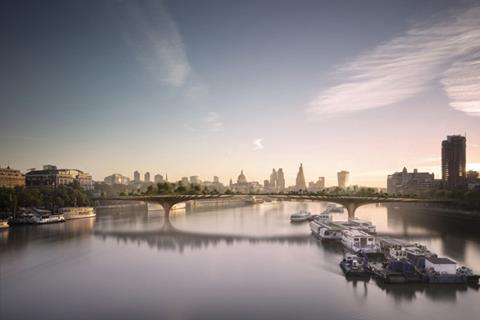
While there was nothing to rival some of the bigger collapses on Britain’s high streets, BHS being the most obvious one, there were a number of notable company failures this year in construction.
Dunne Group was arguably the biggest, as more than 500 jobs were lost when the Scotland-based concrete contractor went under in July. Keltbray moved in and hoovered up a number of the stricken firm’s assets, launching a concrete business the following month with Dunne’s former head Gordon Dunne brought in to help out with the day-to-day running of the firm.
That month another contractor, Kent firm Cardy Construction, which employed around 100 people, went under ‚Äď with administrators totting up the final amount that it owed subcontractors at an eye-watering ¬£18m.
And a famous old name in plant hire, crane firm Hewden collapsed last month with administrators immediately making around a third of its 750 staff redundant.
As well as collapses this year, this being construction there were problem jobs to contend with too.
London mayor Sadiq Khan decided he wanted to find out for himself why costs on the scheme to turn the Olympic stadium into a new football ground (below) for West Ham United kept on going up and up. Balfour Beatty’s original contract for the work was £154m but it turns out that was out by £166m. So Khan ordered an inquiry.
Meanwhile Laing O’Rourke, which famously left a number of problem jobs with Laing Plc when O’Rourke bought that firm’s construction arm all those years ago, was forced to take the pain on a hospital scheme in Canada with the firm estimated to have lost £80m on the job.
Elsewhere, Interserve admitted it had racked up a ¬£70m loss at its energy-from-waste business. That was in August. Last month its client on one such scheme in Glasgow kicked it off that ‚Äď and with a flea in its ear as well. ‚ÄúInterserve has continually and repeatedly failed to meet delivery milestones,‚ÄĚ Viridor thundered. And all this came just 24 hours after Interserve said it was looking for a new chief executive, Adrian Ringrose stepping down ‚Äúin order to pursue the next phase of his career‚ÄĚ. The firm has begun legal action on a separate energy-from-waste scheme, the EnviRecover plant in Kidderminster after client HZI also removed it from the scheme.
Meanwhile, a job that hasn‚Äôt even started ‚Äď but was supposed to this year ‚Äď continued to generate all sorts of bad publicity. The ¬£185m Garden Bridge has been given ¬£60m in taxpayers‚Äô money and is due to be built by Bouygues. But will it ever go ahead? The scheme is now the subject of another Sadiq Khan-ordered inquiry ‚Äď and in keeping with this project‚Äôs capacity to drain public coffers, this one is going to cost ¬£25,000.
Sir Robert McAlpine ended the year without a chief executive as its very first one ‚Äď the much respected Tony Aikenhead ‚Äď left just nine months into a role he was supposed to see out until 2018, when he had planned to retire.
A spokesperson for the firm explained the decision thus: ‚Äú[He‚Äôs] achieved what he‚Äôd set out to achieve.‚ÄĚ Either that‚Äôs stretching it or he‚Äôs a quick worker.
Elsewhere, the government‚Äôs flagship consultancy framework, which was due to have come into place in 2013 to replace another framework, finally went out to tender ‚Äď more than three years after it was due to launch. The ¬£2.9bn framework, run by the Crown Commercial Service (CCS), will go live next March. But so many got fed up of waiting for the CCS to get the green light, that over the summer the Education Funding Agency and HM Revenue & Customs said they were considering launching their own consultancy frameworks. In September, one of those that might have reasonably been expected to use it, nuclear decommissioning body Magnox, posted a tender notification for a three-year consultancy framework worth ¬£27m.
Finally, remember those bolts on the Cheesegrater, the ones that needed replacing? Ian Lawson does. The chief executive of Severfield, the steelwork firm that carried out the contract on the building and which was tasked with replacing hundreds of them at a cost of £6m, was getting fed up with answering questions about the work ever since news of the broken bolts emerged in 2014. Well, apparently the work’s finished. Hooray.
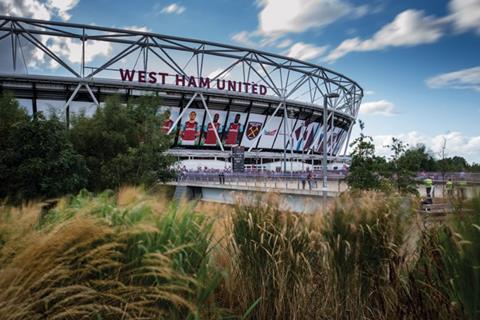
Baby It‚Äôs Cold Outside ‚Äď economy feels the chill
The economic climate started the year temperate enough, but a chilly wind blew in stronger and stronger as it went on ‚Äď albeit the violent gales many predicted would result from a referendum ‚ÄúOut‚ÄĚ vote never quite materialised. In February, the Construction Products Association fretted about growing economic uncertainty, but nevertheless predicted 2016 construction output growth of 3.6%. The reality is that the uncertainty of 2016 has brought output growth of just 0.6% in the first three quarters of the year, according to the latest government data.
Early in the year the biggest impact on the construction market was the phasing in of higher stamp duty rates on second home purchases in April, which caused sales to spike in advance and slump in the aftermath ‚Äď particularly in London, from where sales have never really recovered. The referendum vote itself saw stock markets tumble, with shares in housebuilders falling by as much as 40% on fears of an impending economic downturn, stoked in part by Treasury predictions of a 3.6% hit to GDP in the two years after a Brexit vote. Commercial clients paused or scrapped planned developments for the same reason, with a ļŕ∂ī…Á«Ý survey showing half of firms lost work as a result. However, there was no immediate economic collapse, and with the realisation slowly dawning over the summer that the world hadn‚Äôt ended, confidence picked up, particularly in the housing market ‚Äď to the jubilation of Brexiteers.
However, the real impact of the Brexit vote and related economic uncertainty was underlined by the independent forecasts published alongside the chancellor‚Äôs Autumn Statement, which showed a ¬£120bn hit to the UK government‚Äôs finances compared with the equivalent forecasts in the spring. The forecasts said overall GDP would rise by just 2.1% this year, compared with the 2.4% predicted six months previously, and that 2017 growth would be just 1.4% ‚Äď down from 2.5%, a reduction of more than ¬£20bn. Stay indoors ‚Äď it‚Äôll be even colder next year.
All I Want For Christmas ‚Ķ is one million homes ‚Äď the year in housing
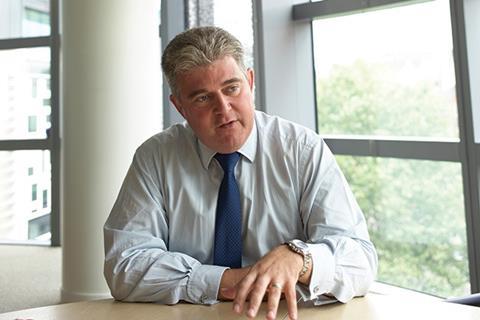
This year was a turbulent one for housebuilders, despite the fundamentals of the economy remaining sound, and the continued support to the market provided by low interest rates. The year began with then housing minister Brandon Lewis (above) stressing the government’s commitment to home ownership above all other tenures, and facing down opposition in the House of Lords to its Starter Homes plans, despite concerns they might hold back construction overall.
After stamp duty rule changes hit the market in spring, the June referendum presaged a big drop in housebuilding starts in July, according to NHBC data. The main builders only picked their tools back up once the post Brexit-jitters subsided. The new government that was formed after the referendum happily took little time to recommit to its predecessor‚Äôs ambition to build one million homes in the 2015-20 parliament ‚Äď while also setting about broadening the government‚Äôs focus from simply home ownership to new houses of all kinds.
While official stats ran only to March, they showed housing output overall continuing to rise, but at a rate few think puts the government on course to hit its one million target. The government said 168,000 homes were built in the year to March, and the government‚Äôs looser ‚Äúnet additions‚ÄĚ number (which includes new homes gained from change of use) edged just 10,000 short of hitting the magic 200,000-a-year run rate. The construction of affordable housing, however, fell to historic lows, with just 32,000 homes completed in 2015-16, a more than 50% fall on 2014-15.
This continuing rather stodgy progress led to a £1.4bn affordable housing boost in the Autumn Statement and £2.3bn for housing-related infrastructure. However, the housing white paper that the government had promised the sector for Christmas will not now be adding weight to Santa’s sack, having been delayed until the new year.
Look To The Future Now, It‚Äôs Only Just Begu-u-un ‚Äď the skills crisis
One way or another, the issue of skills and training has been at the centre of the debate over the future of construction this year. Most obviously, the issue was the absolute heart of the review of the construction industry by Mark Farmer, (pictured below), alarmingly entitled Modernise or Die, which in October presented a stark analysis of the demographic challenge facing the sector. Farmer’s primary recommendation, that the industry make greater use of off-site construction methods, was rooted in his assessment that the next decade could see a 20-25% decline in the available labour force, as older workers retire.

He said even without assuming any industry growth, 700,000 people needed to be trained simply to replace those leaving.
This problem deepened ‚Äď though nobody yet knows by how much ‚Äď with the vote to leave the EU in June. Census data suggests just over 10% of the UK‚Äôs construction workforce hails from overseas, with the proportion much higher in some regions, including London. Farmer said the prospect of a post-Brexit clampdown on immigration made ‚Äúthe case for action [on skills] even more critical‚ÄĚ.
Farmer‚Äôs other central recommendation was for root and branch reform of the Construction Industry Training Board (CITB), which oversees grants for training new apprentices, funded by an industry-wide levy. The government responded by appointing former chief construction adviser Paul Morrell to lead a review into the body, which was already under pressure following the government‚Äôs decision to set up an economy-wide levy on large employers to pay for apprenticeships. It became clear this year that the new levy will see 900 of the largest construction firms pay both the existing levy and the new one ‚Äď at a rate 0.5% of their wage bill. Pleas to hold off from implementing the new all-industry apprenticeship levy next April fell on deaf ears, while the CITB, whose chief executive Adrian Belton resigned earlier this week, said the funding rates proposed would see funding for construction apprenticeships cut by up to 30%.
Happy Christmas!
Hallelujah! ‚Äď for Heathrow, Hinkley and HS2
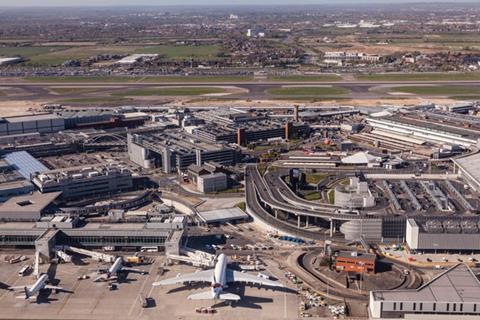
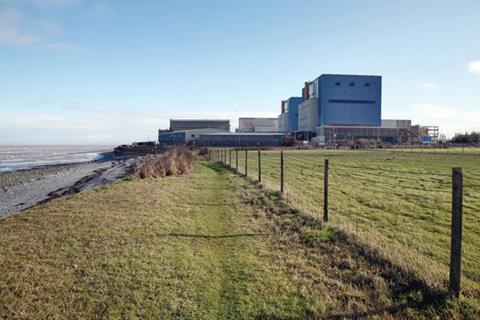
As far as infrastructure goes, 2016 was the year of the Hs ‚Äď Heathrow, Hinkley and HS2. By the end anyway.
The year started with the classic ‚Äúwill it, won‚Äôt it‚ÄĚ saga, with the future of all three projects up in the air. Top contractors lined up to tell the government to back a new runway at Heathrow while it dithered over a decision, and EDF continued to ponder, as it had done for the previous four years, over whether or not it was actually going to build another nuclear power station at Hinkley Point.
It looked even worse for the projects with the seismic EU referendum result and ensuing political aftershocks. New prime minister Theresa May, albeit known to be a supporter of HS2, was said to be anti-Heathrow and also raised concerns over China’s involvement in Hinkley. Fears over the latter were heightened spectacularly when the government, just minutes after EDF finally gave the green light to a project it was weighing up for five years, declared it would review the project.
Heathrow also looked in line for the axe, with unnamed ministers queuing up to tell newspapers a new runway there looked ‚Äúdead in the water‚ÄĚ. HS2 meanwhile had to survive its chief exec leaving and a damning National Audit Office report into the costs of the project.
But in the end, it was happily ever after for all three H’s as May backed Hinkley and Heathrow and rubber-stamped her support for HS2. The new government’s economic policy was confirmed in the Autumn Statement with a £23bn fund to be spent on infrastructure and more money committed to individual projects.
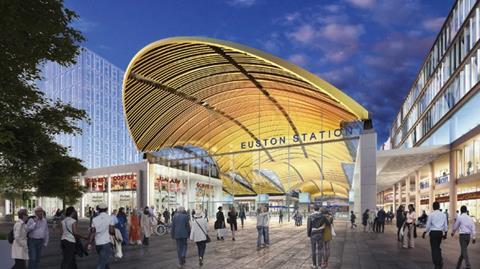
I Wish It Could Be The Olympics Everyday ‚Äď Rio‚Äôs moment

Despite all the dramas ‚Äď builders going bust, venues unfinished with a month to go, national protests over the soaring costs ‚Äď the Rio 2016 Olympics actually happened. And what‚Äôs more, even with concerns over the quality of construction on most of the venues, it all went off without a hitch. Even the velodrome, handed over just two weeks before the ceremony, survived the Games without an issue.
Though Team GB performed even better in Rio than in London 2012 with a record 67 medals, two more than the staggering 65 won four years ago, London was the better games.
In terms of legacy, Rio has failed to have the same impact as London, with the city failing to deliver large chunks of its planned infrastructure. It also seems the construction problems in Brazil might have put off other potential host cities, with Rome joining Hamburg and Boston this year in pulling out of bidding for the 2024 Olympics.



























No comments yet